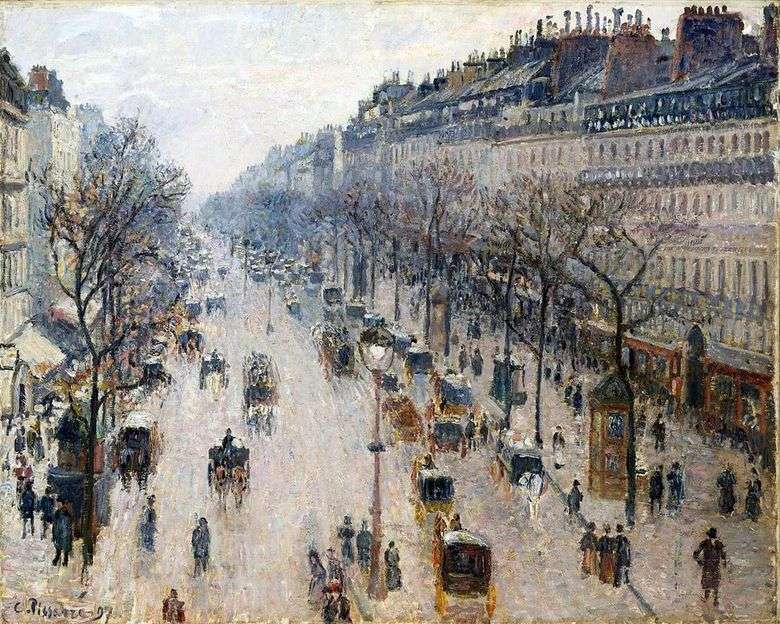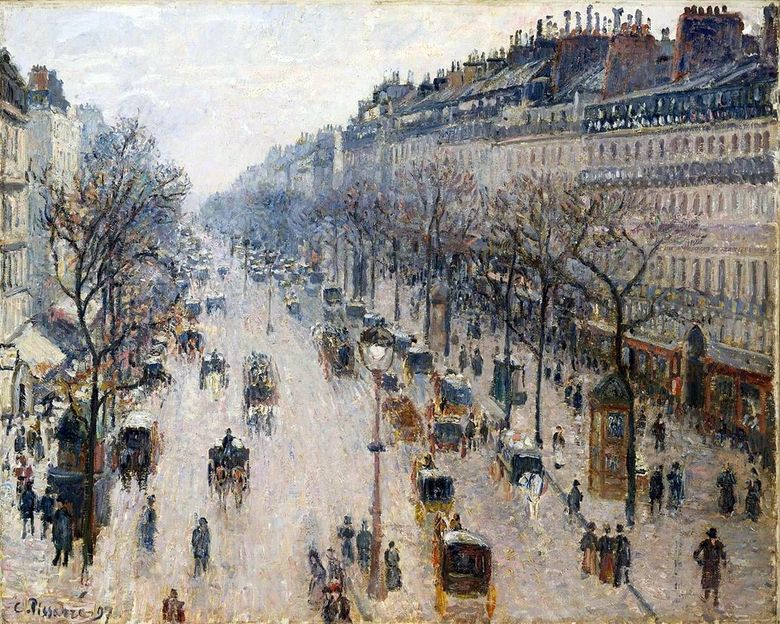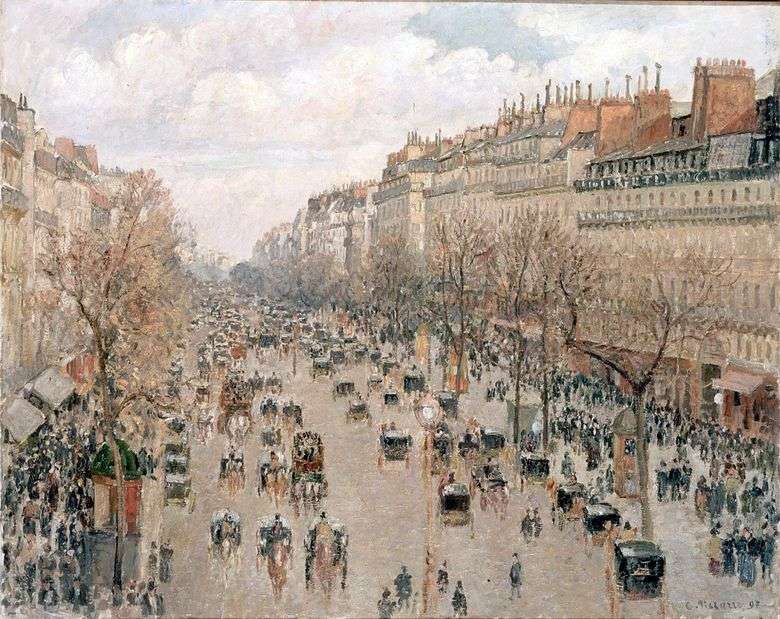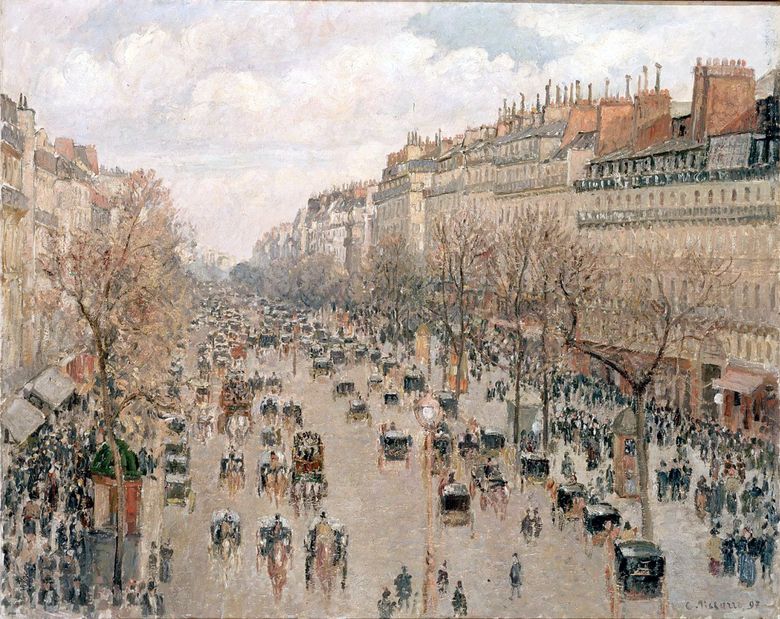
Pissarro strongly disagreed with those who thought the streets of Paris were ugly. For him, they were bright, and the intensity of life on them, changing in a matter of moments, delighted him.
Returning to Paris in early 1897, he watches with interest the metamorphosis that takes place in Montmartre, when a crowded street suddenly became deserted, and vice versa. Being in the Grand Hotel de Russy, the artist professionally recorded all these details, despite his poor eyesight.
The results of the observation resulted in thirteen paintings of the impressionistic direction. The motive of these works is the same – Boulevard Montmartre, depicted from the same angle of view. It would seem that such a moment should have led to the fact that all the canvases would be monotonous, but Pissarro perpetuated the famous street, changing not only the time of day, but also the weather, and also taking into account his mood.
“Boulevard Montmartre in rainy weather” – one of the paintings of this famous series, in which the tiny figures of people, hiding from the weather under umbrellas, do not cease movement, creating a rhythm of the impulsive life of a huge city. The crews are scurrying away, from which there are reflections in the accumulations of water formed after the rain.
The canvases of this series, in many ways superior to the work in which the artist depicted rural landscapes, first of all, it concerns the impressions of lightness and mobility, with which Pissarro saturated the paintings that convey the turbulent life of Paris.
 Boulevard Montmartre – Camille Pissarro
Boulevard Montmartre – Camille Pissarro Boulevard Montmartre – Camille Pissarro
Boulevard Montmartre – Camille Pissarro Boulevard Montmartre. Afternoon, sunny by Camille Pissarro
Boulevard Montmartre. Afternoon, sunny by Camille Pissarro Boulevard Montmartre. Por la tarde, soleado – Camille Pissarro
Boulevard Montmartre. Por la tarde, soleado – Camille Pissarro Lacroix Island Rouen by Camille Pissarro
Lacroix Island Rouen by Camille Pissarro Boulevard Montmartre. Après-midi ensoleillé – Camille Pissarro
Boulevard Montmartre. Après-midi ensoleillé – Camille Pissarro Church of St. Jacques. Dieppe by Camille Pissarro
Church of St. Jacques. Dieppe by Camille Pissarro Entrance to the village of Voisin by Camille Pissarro
Entrance to the village of Voisin by Camille Pissarro